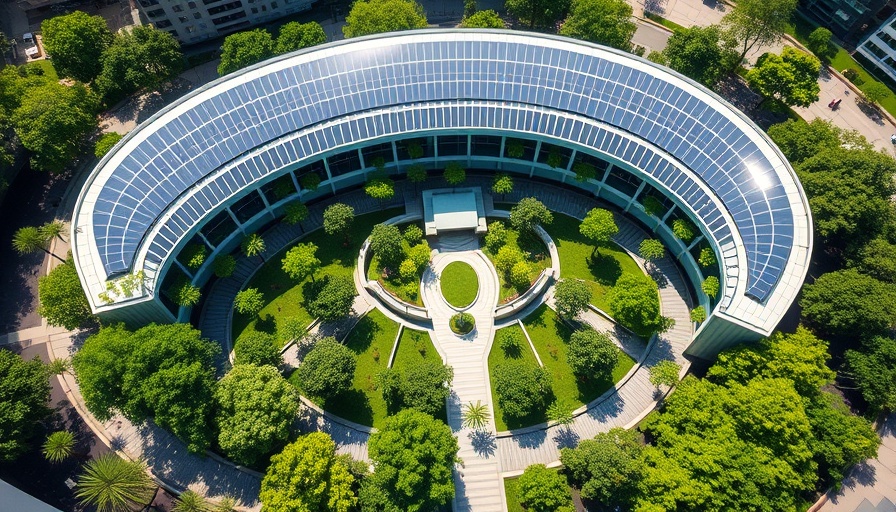
The Revolution of Sustainable Architecture
As environmental concerns grow globally, the spotlight is shining on sustainable architecture, a field that embodies the principles of green living while pushing the boundaries of innovation. The Freiburg City Hall stands as a paragon of environmentally conscious design, attracting interest from individuals keen on sustainable living—especially homeowners eager to integrate eco-friendly technologies into their residences. This exceptional building demonstrates how architecture can harmoniously blend functionality with environmental stewardship, setting an inspiring example for those looking to make conscientious choices.
In ONE OF THE WORLD’S MOST SUSTAINABLE BUILDINGS, we dive into the innovative practices of the Freiburg City Hall, exploring key insights that sparked deeper analysis on transforming your own living space sustainably.
Bringing Nature Into Urban Spaces
One of the most remarkable features of the Freiburg City Hall is its design, which embraces the concept of biophilia—the idea that humans have an innate desire to connect with nature. Its extensive use of greenery on its facades not only beautifies the urban landscape but also serves practical functions, such as providing natural insulation and improving air quality. Homeowners can translate this principle to their living spaces by adding vertical gardens or green roofs, establishing their homes as sanctuaries that benefit both them and the planet.
Harnessing Renewable Energy
Central to the Freiburg City Hall's sustainable design are the technologies that harness renewable energy. Equipped with solar panels, the building generates clean energy, significantly diminishing its carbon footprint. Homeowners can similarly explore solar energy solutions tailored to their needs, such as installing photovoltaic (PV) panels or solar water heaters. The initial investment may seem daunting, but the long-term savings on energy bills and the contribution to a healthier planet make solar technologies a worthy consideration.
Innovative Water Management Strategies
Water conservation is vital in sustainable living, and the design of the Freiburg City Hall illustrates this perfectly. The building employs rainwater harvesting systems, which efficiently channel rain into reservoirs for irrigation and toilet flushing. Homeowners can adopt simple water-saving techniques, from installing low-flow faucets to utilizing rain barrels, to efficiently manage water consumption and reduce reliance on municipal water supplies.
Creating Community Spaces and Promoting Social Interaction
The social aspect of the Freiburg City Hall can’t be ignored; it’s not just a working space but a communal hub. The architects designed the building to foster social interactions, featuring open spaces that encourage gatherings and collaboration. As we embrace sustainability, integrating community-focused designs into our homes can enrich our lives, fostering relationships with neighbors through community gardens or shared recreational areas.
Future Trends in Sustainable Living
Looking ahead, the trend towards sustainable living will likely gain momentum as more people recognize its importance for future generations. Advances in smart home technology coupled with sustainable design principles will radically transform how we live. Consider implementing smart thermostats, energy-efficient appliances, and home automation systems that not only reduce energy use but also enhance our daily lives. By embracing these innovations, homeowners can contribute to a healthier planet while enhancing their living environments.
Common Misconceptions About Sustainable Living
Many believe that sustainable living requires significant sacrifices, whether in lifestyle or aesthetics. However, the Freiburg City Hall contradicts that notion entirely, showcasing that eco-friendly designs can be both stunning and functional. This realization is crucial for homeowners—choosing to go green doesn’t mean compromising comfort or style; instead, it opens the door to a holistic lifestyle that resonates with modern sensibilities.
Taking The Leap: Your Sustainable Journey Begins
As we explore the lessons embodied by the Freiburg City Hall, it's essential to understand that sustainable living is a journey rather than a destination. Whether it’s small changes like using LED lights or larger investments in renewable energy, every step counts. We encourage you to start your sustainable journey today. Explore options in your local community, research technologies that appeal to you, and consider how you might redefine your space into an eco-friendly haven.
 Add Row
Add Row  Add
Add 



Write A Comment